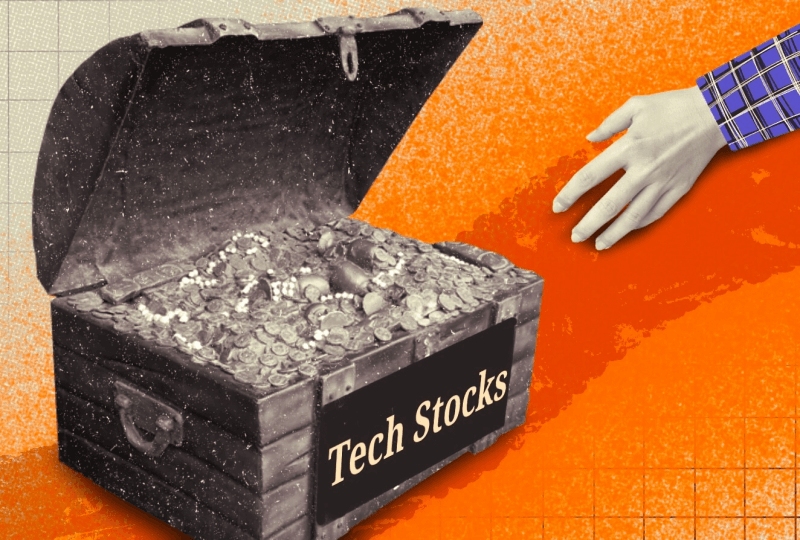Know Before You Buy: Understand the Risk of High Tech Stock Prices.
Mar 28, 2023

After a disastrous 2022, technology stocks have skyrocketed, making them exceedingly pricey. The moment for prudence has arrived.
The technology-heavy Nasdaq Composite index has risen almost 13% this year, compared to the S&P 500's gain of less than 4%. The main reason is concern about banks rather than spectacular results from tech companies.
Fears that more banks could collapse and that acquiring credit would become more difficult are causing investors to be concerned about economic growth and limiting broader stock market gains. A weaker economy means less inflation, allowing the Federal Reserve to pull back on interest rate hikes, lowering long-term bond rates, and increasing the value of future earnings.
This is important for the technology sector because investors buy growth stocks primarily for the profits companies project to deliver in a few years. Lower interest rates increase the present discounted value of such returns, suggesting that investors may be willing to pay more.
At the same time, the relatively rapid expansion of technology businesses makes profits less susceptible to fluctuations in demand in the larger economy.
Moreover, the most obvious reason is that these stocks seem quite expensive right now. According to FactSet, the Nasdaq has a combined future price-to-earnings ratio of about 25.4 times, nearly 44% higher than the S&P 500's 17.6 times. The Nasdaq often trades at a premium, but this is an unusually large divergence in value.
It is near the top of the surge in August 2020, when the Nasdaq traded at a 48% premium to the S&P 500. Over the past decade, the Nasdaq has sometimes traded at a premium of less than 20%.
So, the Nasdaq's so-called PEG ratio, which divides the price/earnings multiple by the pace of earnings growth to account for how quickly profits are expanding, is pretty enticing. With a price/earnings ratio of 25.4 times and aggregate per-share profits predicted to rise at a rate of 17% per year over the next three years, the figure works out to around 1.5 times.
That's rather modest, given that the S&P 500 trades at a PEG ratio of more than twice. At the moment, investors are paying less for the Nasdaq's expected earnings growth than for the S&P 500's expected profit growth.
One counterargument is that Nasdaq's PEG is only as low as it seems if profits growth is as great as Wall Street anticipates. A little more than 20% gain in EPS for 2024 follows a potentially difficult 2023. It would fall to 15% by 2025.
Several IT trends, including e-commerce, digital payments, entertainment streaming, and even cloud services, are still growing at a slower pace.
"These mega tech companies are subject to the law of large numbers," said Doug Peta, chief U.S. investment strategist at BCA Research. "It's difficult to keep growing at a fast rate."
Even if technology stays exceptionally costly, the short term might see a stronger rebound. Banking troubles should continue to weigh on the stock market for some time, especially if evidence mounts that borrowing difficulties are harming the economy.
That would drive more money into tech names. "One thing that helps growth tech stocks' is that the worries for the broader market have emanated from worries in one particular component of the market, the banks," Peta added.
The difficulty is that while purchasing now is a bet that the tech trade will have a bit more juice in the near term, the sector appears a lot less appealing than it did a few months ago. It is significantly more prone to underperformance.




